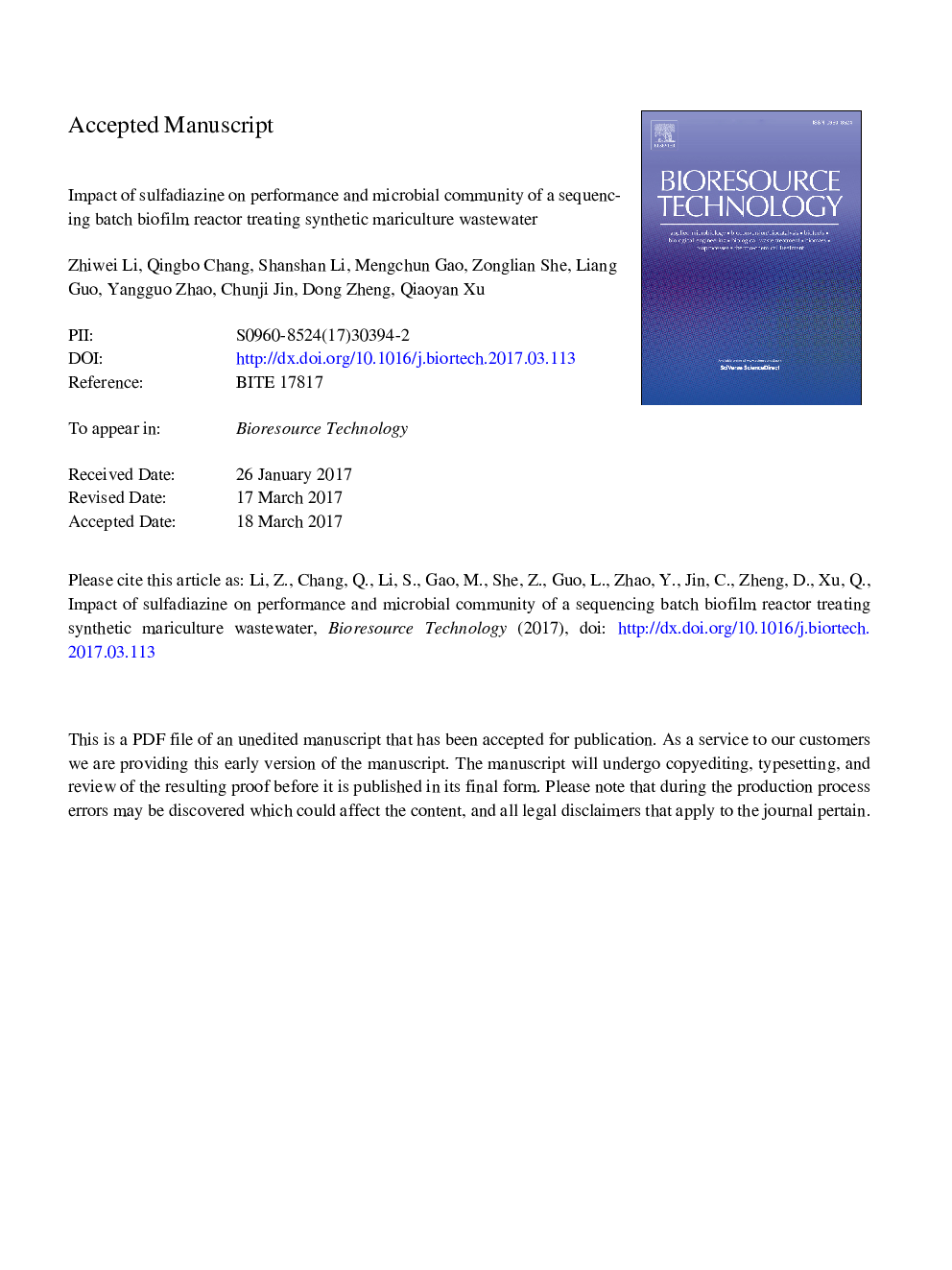| Article ID | Journal | Published Year | Pages | File Type |
|---|---|---|---|---|
| 4997355 | Bioresource Technology | 2017 | 33 Pages |
Abstract
The impact of sulfadiazine on the performance, microbial activity and microbial community of a sequencing batch biofilm reactor (SBBR) were evaluated in treating mariculture wastewater due to the application of sulfadiazine as an antibiotic in mariculture. The COD and nitrogen removals kept stable at 0-6Â mg/L sulfadiazine and were inhibited at 10-35Â mg/L sulfadiazine. The microbial activities related to organic matter and nitrogen removals reduced with an increase in sulfadiazine concentration. The presence of sulfadiazine could affect the production and chemical composition of loosely bound extracellular polymeric substances (LB-EPS) and tightly bound EPS (TB-EPS) in the biofilm. High-throughput sequencing demonstrated that sulfadiazine could impact on the microbial richness and diversity of SBBR treating mariculture wastewater. The relative abundances of Nitrosomonas, Nitrospira, Paracoccus, Hyphomicrobium, Rhodanobacter, Thauera and Steroidobacter decreased with an increase in sulfadiazine concentration, indicating that the presence of sulfadiazine decreased the relative abundance of some nitrifying and denitrifying bacteria.
Keywords
Related Topics
Physical Sciences and Engineering
Chemical Engineering
Process Chemistry and Technology
Authors
Zhiwei Li, Qingbo Chang, Shanshan Li, Mengchun Gao, Zonglian She, Liang Guo, Yangguo Zhao, Chunji Jin, Dong Zheng, Qiaoyan Xu,
